|
|
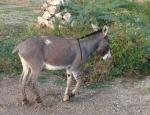
|
Abyssinian Donkey
|
Also Known As: Ethiopian
This breed is found throughout Ethiopia. They are usually slate-gray but are occasionally found in chestnut-brown. The breed is similar to Sudanese Pack donkey. |

|
Anatolia Donkey
|
|
Found throughout Turkey this donkey is found in both black and gray varieties. |
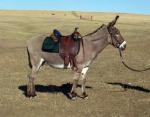
|
Large Standard
|
|
First of all thank you so much for such a nice product. |
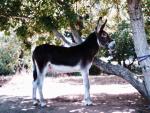
|
Mammoth Jack Stock
|
|
I'm lying down in the hay with my girl Sam, resting my head on hers. We snuggle like this often. Is this natural horsemanship? Nope. Sam is not a horse. What doesn't show in this photo is her 34 inches of ears, measured from the tip of one ear down across her head up to the tip of the other ear. Sam is an American Mammoth |
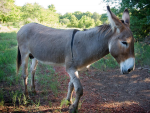
|
Mary Donkey
|
|
Mary and Ashkhabad regions of Turkmenia breed the Mary breed of large donkeys. The height of individual specimens reach 130 - 142cm. Their origin and economic features are similar to the Iranian Hamadan whose descendants can also be encountered in Azerbaijan. In regions where Mary donkeys are bred large typical specimens (male height at withers 119-120cm, female 116-118cm) coexist with smaller ones, hardly different from the Uzbek variety. |
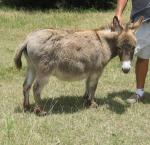
|
Miniature Donkey
|
|
Miniature donkeys are native to the Mediterranean islands of Sicily and Sardinia. They are identified as either Sicilian or Sardinian donkeys according to their ancestry, although the two types do not differ. They have been extensively bred with each other and with animals of unidentified ancestry in the United States to produce a distinctively American breed of donkeys, which we call the Miniature Mediterranean Donkey. According to all information that can be aquired these donkeys are nearly extinct in the land of their origin and have been brought to their current state of being an excellent breed by breeders in the United States who have bred for years for size, disposition and conformation. |
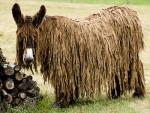
|
Poitou Donkey
|
|
The origins of the Poitou, as with many ancient breeds, is a bit vague. It is said that the donkey and the practice of mule breeding was introduced to the Poitou region of France by the Romans. The two breeds, Poitou (donkey) and Mulassier (horse) seemed to have been developed side by side for the sole purpose of producing mules of exceptional quality. It is not known when the people of Poitou began selecting for the type of mule-sire which we know today as the Poitou, but evidence shows that the breed was already well established by 1717 when a memoirs of the king's advisor described the donkeys of Poitou thus: "There is found, in northern Poitou, donkeys which are as tall as large mules. They are almost completely covered in hair a half-foot long with legs and joints as large as a those of a carriage horse." |
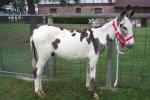
|
Standard Donkey
|
|
Amigo is by TJC Lester & out of a beautiful black & white jenny. He is gentle, halter broke & double registered. He was born 12-31-06 & should mature 48"-50". |
|
|